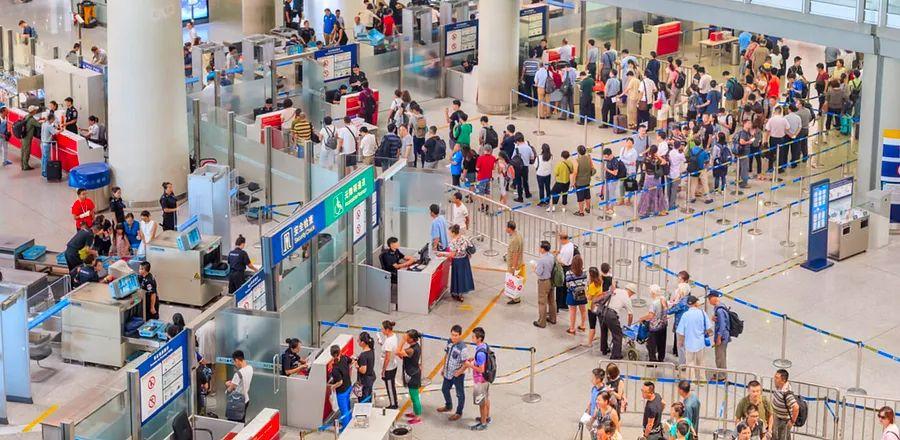U.S. to Mandate COVID-19 Testing for Travelers Arriving from China

On Wednesday, the U.S. announced new COVID-19 testing protocols for all travelers from China, aligning with other countries that are enforcing restrictions due to a rise in infections.
The surge in cases in China comes after the easing of the country's stringent anti-virus measures. The previous 'zero COVID' strategy had kept infection rates low but led to public discontent and significant economic downturns.
Beginning January 5, the new U.S. regulations will apply to all travelers, irrespective of nationality or vaccination status.
In a statement outlining the testing requirements, the U.S. Centers for Disease Control and Prevention pointed to the increase in cases and what it described as insufficient and unclear information from China, including genomic sequencing of the viral strains present in the country.
“This data is essential for effectively tracking the surge in cases and minimizing the risk of a new variant of concern entering the country,” stated the CDC.
Some scientists fear that the COVID-19 surge in China could introduce a new coronavirus variant to the world, which might differ from the current strains. Each infection provides the virus with another opportunity to mutate.
“Our goal is to prevent a variant from entering the U.S. and spreading as we witnessed with Delta or Omicron,” said Matthew Binnicker, director of clinical virology at Mayo Clinic in Rochester, Minnesota.
However, the CDC's measures might be more focused on pressuring China to share more information than on preventing a new variant from entering the U.S., according to Dr. David Dowdy, an infectious disease epidemiologist at Johns Hopkins Bloomberg School of Public Health. He expressed hope that the restrictions would not be prolonged unnecessarily.
“I don’t believe this will significantly hinder the spread of COVID-19,” Dowdy noted. “There is already substantial transmission of COVID-19 occurring within our borders.”
Dr. Stuart Campbell Ray, an infectious disease specialist at Johns Hopkins University, concurred that China is not providing adequate genomic sequencing data. He also pointed out that the U.S. has grown somewhat complacent regarding sequencing and needs to enhance its own efforts. Additionally, the CDC announced the expansion of an early warning program that conducts testing on volunteers at selected airports for new and rare coronavirus variants, which will now include airports in Seattle and Los Angeles.
According to the new U.S. regulations, travelers arriving from China, Hong Kong, and Macau will need to take a COVID-19 test within two days prior to travel and present a negative result before boarding their flight. This requirement applies to all individuals aged two and older, including U.S. citizens.
The rules will also affect individuals traveling from China through a third country, as well as those connecting through the U.S. to other destinations. Travelers who test positive more than 10 days before their flight can provide proof of recovery from COVID-19 instead of a negative test result.
It will be the responsibility of the airlines to verify negative test results and recovery documentation before passengers are allowed to board.
Other nations have implemented similar measures to prevent infections from spreading beyond China's borders. Japan will mandate a negative COVID-19 test upon arrival for travelers from China, while Malaysia has introduced new tracking and surveillance protocols. Countries such as India, Italy, South Korea, and Taiwan are also requiring virus testing for visitors arriving from China.
Lunar New Year, which starts on January 22, typically marks the peak travel season in China, and on Tuesday, the country announced it will resume issuing tourist passports for the first time since the pandemic began in 2020.
“We eagerly anticipate the return of Chinese travelers to the United States,” stated Geoff Freeman, president and CEO of the U.S. Travel Association. He referred to the U.S. policy on testing incoming travelers as “reasonable and appreciated.”
The recent U.S. measures signify a reinstatement of testing requirements for certain international travelers. The Biden administration ended the last of these mandates in June. At that time, the CDC continued to advise that passengers flying to the U.S. get tested shortly before their departure and refrain from traveling if they feel unwell.
“We’ve managed this before. We can do it again,” remarked Dowdy.
At the onset of the pandemic, the U.S. prohibited entry to foreigners arriving from China, just weeks after the virus first appeared there three years ago, with many additional countries being added to the ban. The U.S. began lifting travel restrictions late last year but required incoming travelers to be vaccinated and tested.
Evaluation :
5/5



